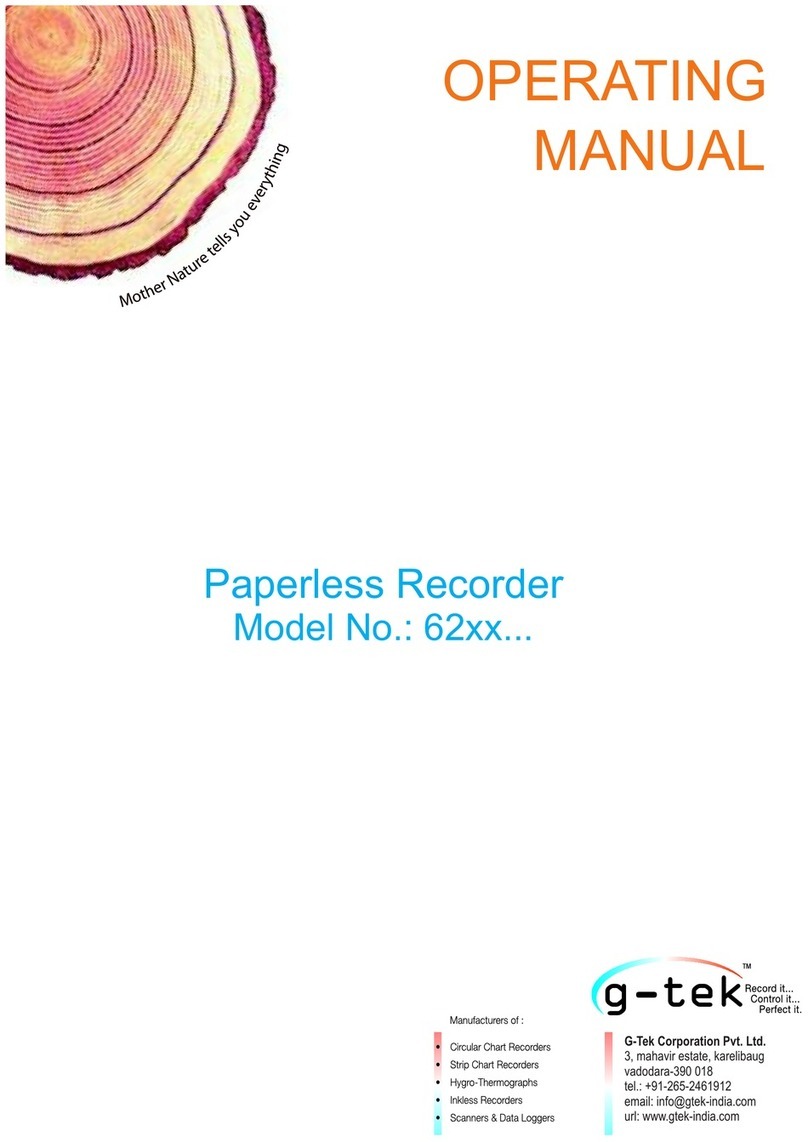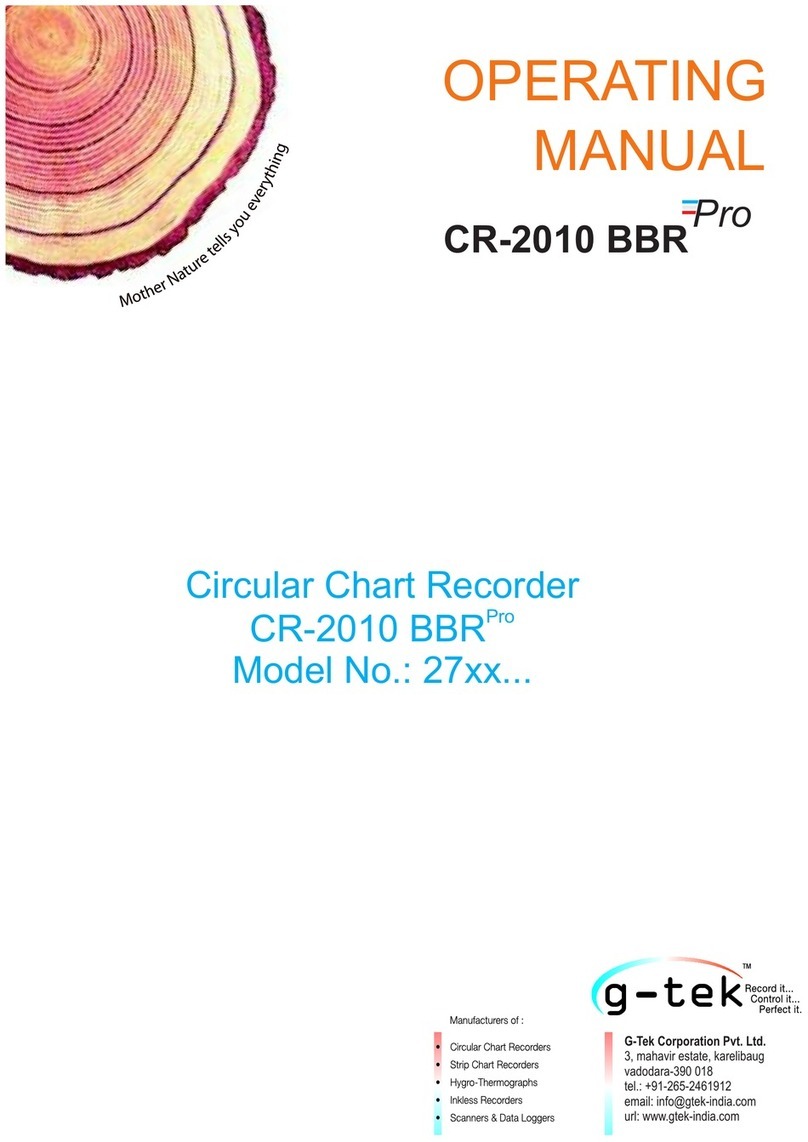LIST OF FIGURES
Figure 1 - Unpacking and Inspection of Recorder...................................................................................6
Figure 2 - Environmental Conditions and Overall Dimensions ...............................................................7
Figure 3 - Pipe Mounting.........................................................................................................................8
Figure 4 - Wall Mounting ........................................................................................................................8
Figure 5 - Panel Mounting.......................................................................................................................9
Figure 6 - Opened Chart Plate and Front View of Base Box .................................................................13
Figure 7 - Power supply PCB .................................................................................................................15
Figure 8 - Sensor Wiring........................................................................................................................17
Figure 9 - Motherboard PCB .................................................................................................................18
Figure 10 - Connecting Transmitter with Recorder & Other Instrument using Ext. Power Supply......19
Figure 11 - Connection of Recorder with Transmitter and Internal Power Supply ..............................20
Figure 12 - Fitting / Replacing the Pen..................................................................................................21
Figure 13 - Chart Fitting ........................................................................................................................22
Figure 14 - Two Pen Recorder Front Panel ...........................................................................................23
Figure 15 - Main menu display..............................................................................................................25
Figure 16 - Chart speed.........................................................................................................................26
Figure 17 - Hour/Minute option ...........................................................................................................26
Figure 18- Display Setting .....................................................................................................................27
Figure 19 - Freeze Panel........................................................................................................................27
Figure 20 - Action (Display)...................................................................................................................27
Figure 21 - Channel Skip........................................................................................................................28
Figure 22 - CJC.......................................................................................................................................29
Figure 23 - Pen Park ..............................................................................................................................30
Figure 24 - Change Pen .........................................................................................................................31
Figure 25 - Channel Configuration........................................................................................................32
Figure 26 - RTD Sensor..........................................................................................................................33
Figure 27 - Sensor Selection..................................................................................................................35
Figure 28 - Range Low Selection...........................................................................................................36
Figure 29 - Span Selection.....................................................................................................................36
Figure 30 - Offset Selection...................................................................................................................37
Figure 31 - Multiplier Selection.............................................................................................................37
Figure 32 - Resolution Decimal Place....................................................................................................38
Figure 33 - Alarm Set point High...........................................................................................................38
Figure 34 - Alarm Set Point Low............................................................................................................38
Figure 35 - Chart Zero ...........................................................................................................................39
Figure 36 - Chart Span...........................................................................................................................39
Figure 37 - Mechanical calibration........................................................................................................40
Figure 38 - Accessories..........................................................................................................................42






























